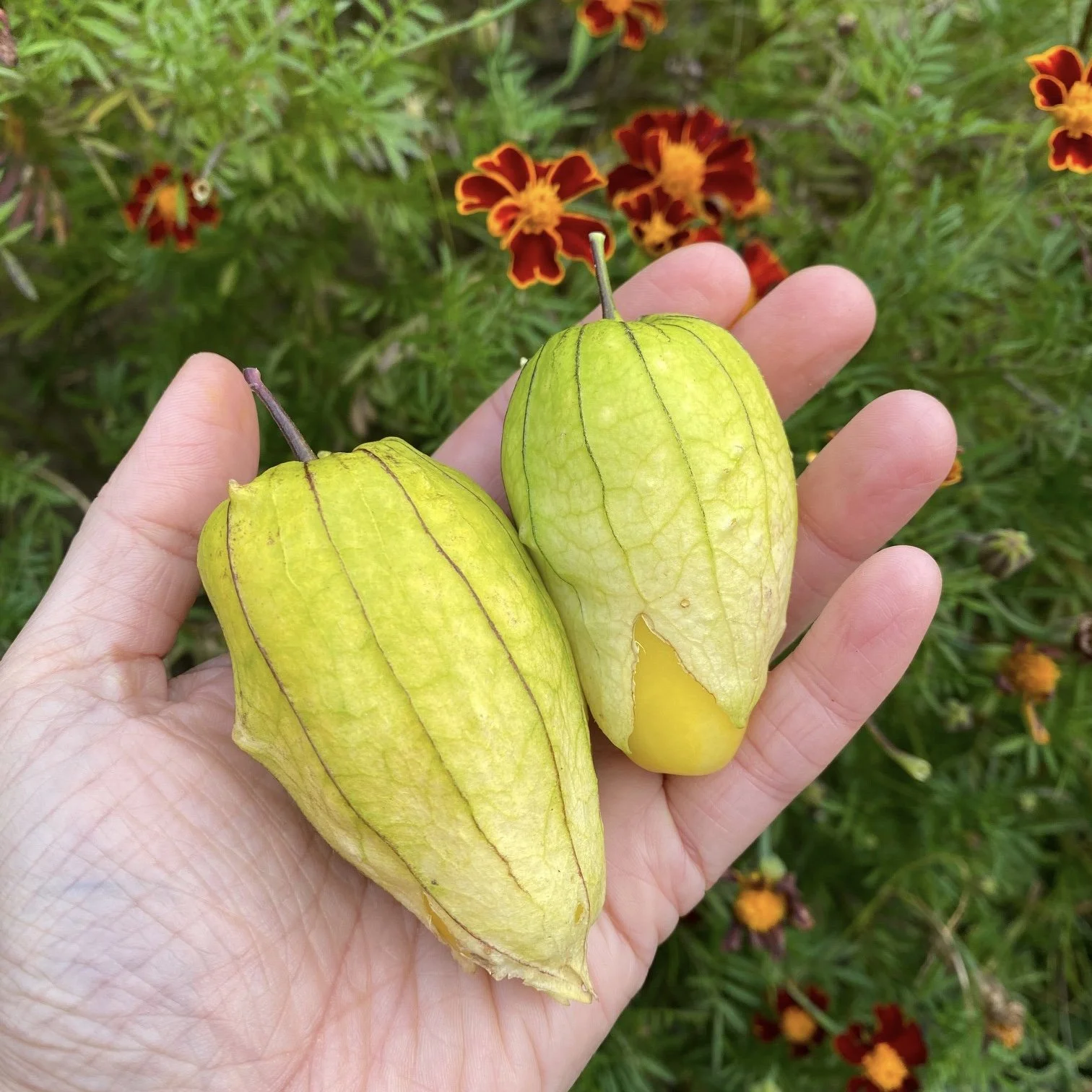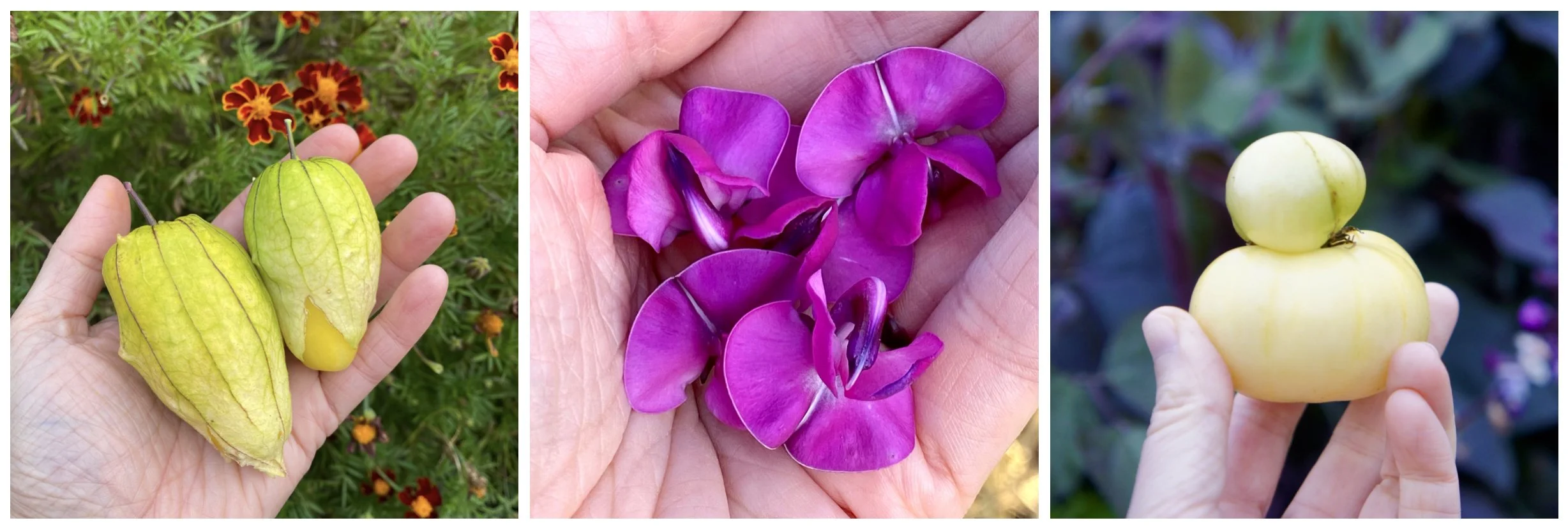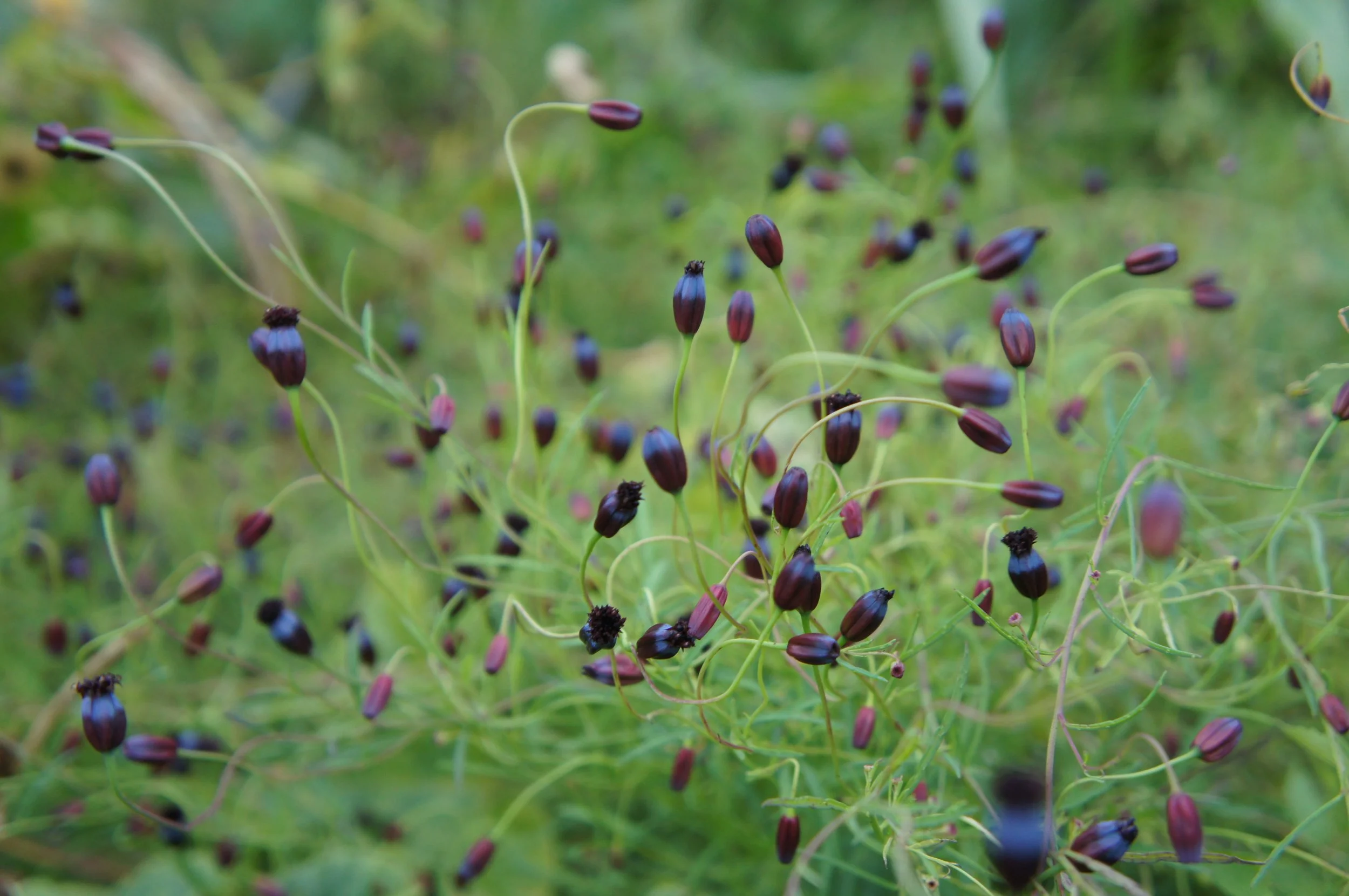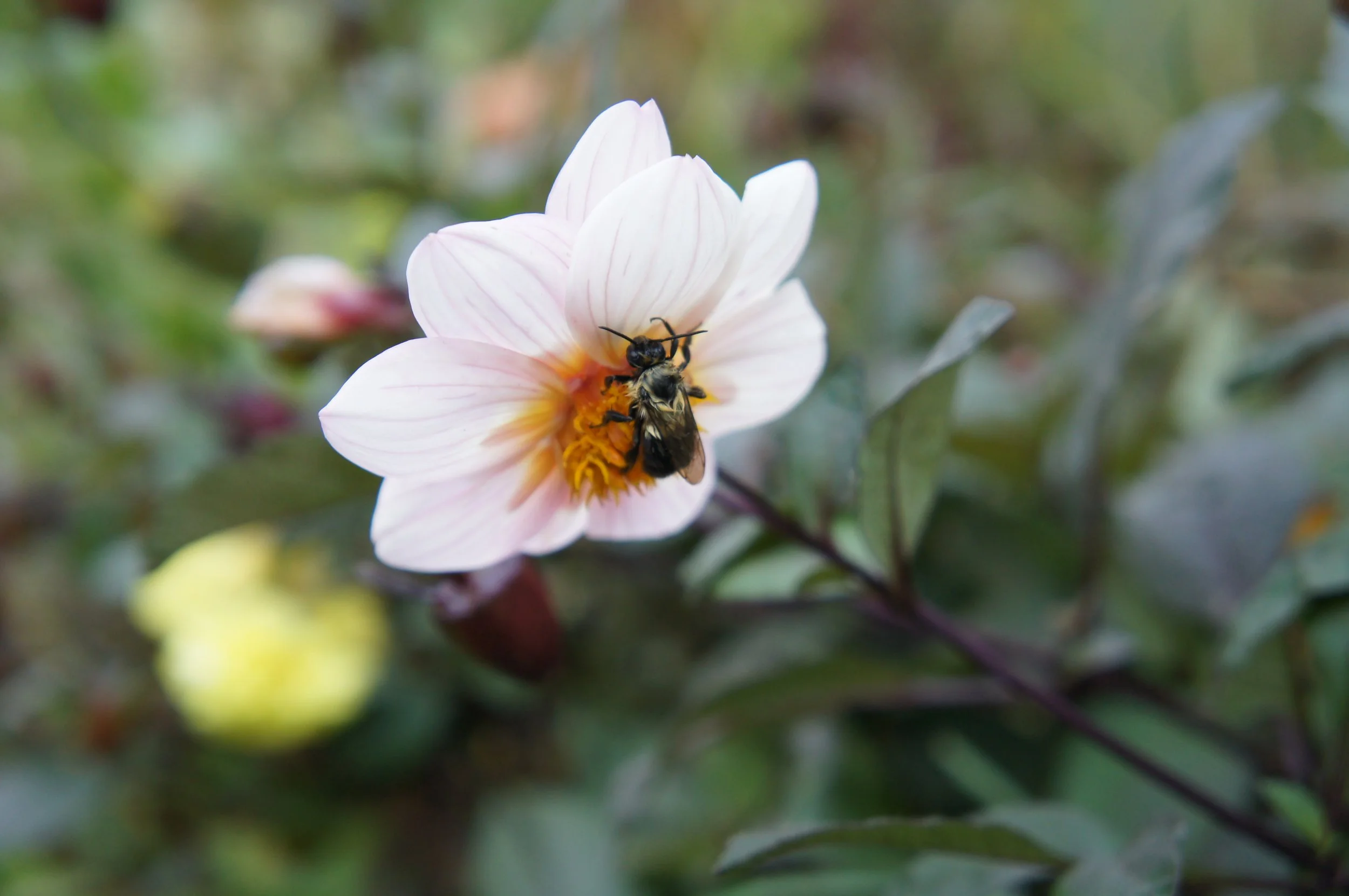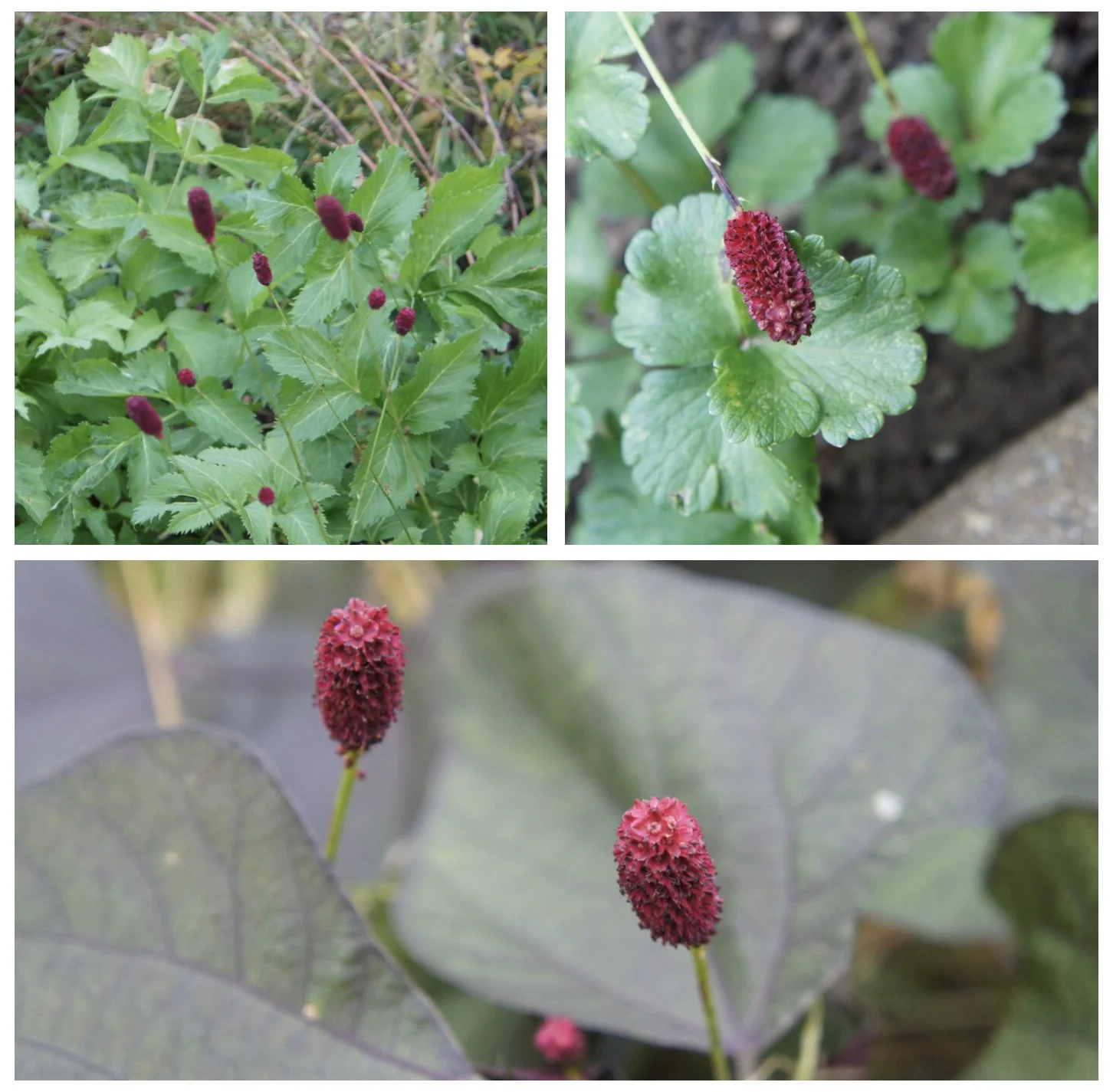The Charms of the Late Autumn Garden
The late autumn garden is full of unexpected wonders. I'm not talking about tidy rows of cool season vegetables, or even a brilliantly designed fallscape. Instead I speak in praise of the relic renegades, and the species that choose to bloom just as the threat of frost looms. A garden festooned with bees too cold to move until noon.
Some gardeners spring into action as soon the weather turns cool, removing all evidence of withered leaves and summer toil. But many summer garden occupants are surprisingly hardy. Our Acorazonado Tomatillos get their second wind just as I think it's time to pull them, and have for two years in a row produced a second flush of fruit in October. As nights turn cold, the dramatic foliage of Ruby Moon Hyacinth Beans becomes practically black, and plants produce beautiful edible flowers right up until the first hard freeze. Tomatoes, too, can ripen surprisingly late in the year, with White Queen proving to be relentless in its production of [sometimes goofy looking] fruits.
Even if you're not a seed saver, many bolting herbs and vegetables are worth keeping in the garden for their esculent flowers and seeds. Fennel pollen commands ridiculous prices at high end markets, but is readily available in many kitchen gardens come autumn. Late blooming Korean Shiso features unique flowers and bracts, and the many seeds they produce are sublime when toasted, ground, and sprinkled over noodles, salads and roasted vegetables.
Bear Necessities Kale is one of the few Brassicas that we grow all year, every year. Plants set out in spring hold through summer without bolting, and become super sweet in autumn. The finely filigreed leaves are the easiest ever for tossing into soup. Pictured behind Bear Necessities above are Aji Pineapple peppers, which are fairly late to ripen but miraculously tolerant of frost. The species, Capsicum baccatum, is an Andean native, which explains its unique ability to withstand cold temperatures.
Nasturtiums feature prominently in both perennial and annual salad gardens all year, but they are at their most attractive in autumn. They dress up beds that are otherwise becoming dormant, and the canopy of their leaves will shelter self-sown seedlings, fostering a flurry of sprouting. Rat Tail Radishes are particularly welcome volunteers, as their autumn greens are sweet and their stems a striking violet.
Among our favorite plants are those that, frustratingly, barely have the chance to produce seed in our gardens due to their wont of blooming so late in the season. This includes the beautiful Wedding Bells Morning Glory and incomparable culinary herb Pepicha. This year, we are so close to having a crop of Pepicha seeds that every drop of rain feels like a personal affront. It is some consolation that the unripe seed pods are truly beautiful en masse.
Other painfully late bloomers include wild Dahlias. We have towering Dahlia imperalis plants in our garden this year, but not a bud in sight as of late October. Dahlia coccinea has just begun to bloom and, like the much earlier Dahlia x pinnata, seems to be especially favored by our native bees.
We've been growing the most wonderful selection of Angelica, superior (in our experience) to all others, both medicinally and aesthetically. Her companions include a blooming Sanguisorba menziesii, whose long wiry stems have found themselves strewn every which way after long spells of wind and heavy rain. The flowers are mingling with Scotch Lovage and the aforementioned Hyacinth Bean, and if they choose to self-sow I fully expect this species to take over the garden. And I don't expect that I will mind.
